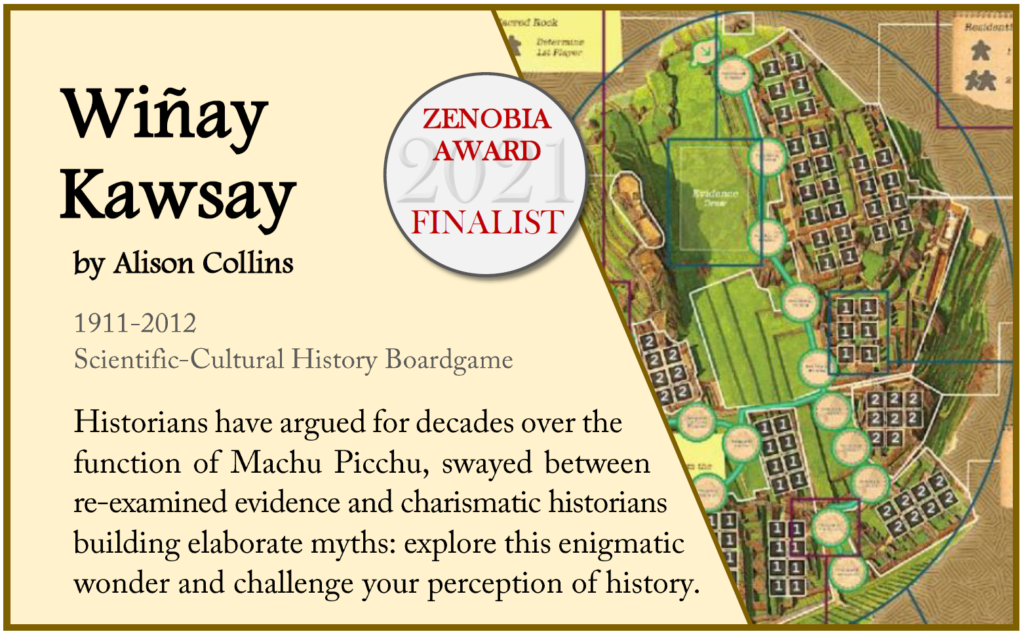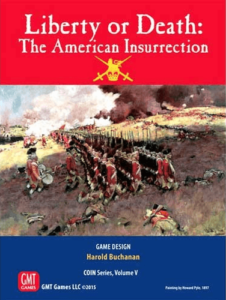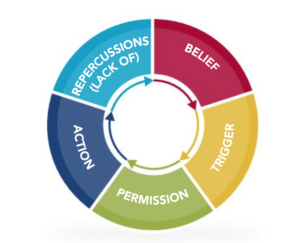
Zenobia Award Announcement and Interview
There is a new award for tabletop historical game designers, and it’s worth talking about here.
Moss shook the foundations, but at the same time remained in the comfort zone of the beauty industry, as she remained a white European. (Before her, this niche stanford beauty journal was occupied by models of the rebellious 1960s like Twiggy, with her awkward physique of a 12-year-old boy. In the 1970s, a scandal broke out around Lauren Hutton – just because of the gap between her front teeth.) Even the black models who broke down barriers weren’t that dangerous: Beverly Johnson, the first African American to appear on the cover of American Vogue, Somali-born Iman, Naomi Campbell and Tyra Banks. They had well-defined faces and long hair that fell over their shoulders, perhaps wigs or fake curls. Iman’s swan neck stunned legendary fashion editor Diana Vreeland. Campbell, with her luxurious legs and thighs, was and remains sexy, and Banks rose to fame as a nearby courtyard girl in a polka-dot bikini on the cover of Sports Illustrated.
From the Zenobia Award website:
Historical board games are enjoyed by people from all walks of life, but their designers are predominately white men. The Zenobia Award hopes to change this by encouraging game submissions by people from marginalized groups.
The Zenobia Award is not an ordinary design award. Promising applicants will receive mentorship on their designs from established industry designers, and the winners will receive help navigating the game publication process in addition to a cash prize.
Entry is limited to Contestants from underrepresented groups—women, persons of color, and LGBTQ+ persons. A design team prominently including any such persons may enter together.
It is important to note that contestants will retain all rights to their game rules and prototype designs. You do not need to sacrifice your IP rights to enter this contest.
So who started this and why did they start it? The board members include not only several major tabletop game designers and members of the gaming media, but also academics from Georgetown, University of California San Diego, Southern Illinois University Edwardsville, and The Hague University.

I reached out to board members Harold Buchanan and Volko Ruhnke to get their thoughts. Harold is an Adjunct Professor at the Rady School of Business, UC San Diego, and an award-winning freelance game designer. Harold’s 2016 game Liberty or Death: The American Insurrection was a Golden Geek Best Wargame Nominee. Volko is a freelance board game designer who retired from the US intelligence community, where he promoted the use of tabletop games for training and analysis. Volko has won multiple awards for boardgame design, including five Charles S. Roberts Awards, two of which for Design Elegance.

This interview has been edited for brevity.
Chris: For decades, the design, and largely the play, of tabletop historical gaming has been dominated by middle-aged white men. Why do you think that is; and more importantly, why is this the right time to reach out to underrepresented and marginalized communities?
Volko: I’m not a social historian, but my guess is that the answer is tradition. Our current hobby descends directly from the commercial historical tabletop games of the 1950s and 1960s and, in the case of miniatures, well before that. The topics were those that tended to interest white men, especially conventional wars with a European or US focus. Topics guided the growth in participation, and participation guided further development of topics. It’s path dependency, not necessarily the full possibilities of the medium or inherent merits of where it might go next.
This is the right time because it’s about time! The traditionalism has kept things going, yes, but it becomes frustrating as we have come to understand the innovating power of fusing underrepresented with mainstream communities and as we see in the explosion of the general board gaming repertoire the promise of a heretofore unimagined breadth.
Chris: Historical gaming and tabletop gaming as a whole have often treated colonialism in a non-critical way in design and in play. Do you see diversity and inclusion in game design as being part of the decolonization of historical games? Or should we think of them as separate challenges to tackle?
Volko: That may well be one example of how homogeneity in participation can reinforce homogeneity from a historical perspective. It is not that white US-European men cannot propose more ethical or up-to-date perspectives in historical games; they can. It is just that they may be less likely to be aware of the need to do so in the first place.
History as a discipline is humanity, not social science. It cannot escape the historian’s personal interpretation. Who we each are, the life we have lived, will not predetermine our interpretation of our world, but it does influence it. As to the treatment of colonialism in historical games, I hope that we shall see: as more diverse players grow into more diverse designers, how will the depiction in games of world history develop?
Chris: We have seen many diversity and inclusion efforts on a corporate and organizational level as being almost a buzzword, with the actual real-world changes being minimal. How does the Zenobia Award hope to tackle this issue of efficacy?
Harold: Corporate and governmental entities are different in many ways from a group of hobbyists, in that they hire and promote, buy, and sell. As a result, they wield tremendous economic power and have very large groups of constituents both directly and indirectly influenced.
As a freelance game designer, I have to use different tools to impact the hobby that we all enjoy. I can’t compel or financially incent anyone to do anything. The tools I do have are my experience, access, expertise, and creativity. Using these tools we come at problems from completely different directions in the hope that we can use our tools to improve access for others and build momentum.
The representation we seek is not just in game design. Possible spin-offs for this project are in the areas of art, editing, supply, publication, convention management, convention attendance, and basic participation. This is a grand experiment but it is only a start.
Chris: The historical gaming market has seen a number of familiar subjects, such as World War 2 and the Napoleonic Era, used again and again in game design. What are your hopes for market changes as we see new voices coming onto the designing and publishing scene?
Volko: We have seen a refreshing broadening of topics as historical gaming has grown along with board gaming in general, and as even old designers, publishers, and hobbyists pull off new tricks. But my sense is that growth in participation by folks from more diverse experiences—and identity can be a big part of life experience—could accelerate that trend.
We have so many troughs in the coverage of history, not just by the focus on the same old battles and wars, but by the focus on military history over political, economic, cultural, and social history. Tabletop gaming is such a powerful medium to explore complex human affairs. What could be more exciting than harnessing it to visit new places?
Chris: There are some wonderful publishers in the market, but embracing new ideas comes with a lot of potential risks. Do you think a new publishing model will be necessary to get diverse voices into the marketplace? Or are the traditional historical gaming publishers really hungry for this?
Harold: The publisher response has been overwhelming and gives us a great deal of momentum. There are some publishers that are not interested or publishers that are too busy. But, if you focus on who is at the table now, it gives us the potential to do big things.
If we end up finding lots of opportunities in the supply of games from these underrepresented communities and can’t get them published, then we can talk about model problems. But, the early feedback is excellent. We really have a lot of heavy lifting to do before we test the publisher commitment and can conclude there are problems.
So why is this award important to Game Design Thinking?
I have mentored burgeoning game designers from diverse groups at Girls Inc. and the California Academy of Sciences, and have seen first hand how adding new voices can lead to both better games and a better game creation ecosystem.
The Innovation Equation tells us that (useful) Friction + Inclusion + Trust leads to more innovative thinking. And I believe the Zenobia Award is a solid step forward.
This is about taking a design tool like the Core Loop of Sexual Harassment that we are trying to slow down, and instead, build it into a new Core Loop of Inclusion that we want to nurture and support over time.
The organizers in effect want to create a Magic Circle and help turn it into a reality; namely published games that a more diverse group of people can be proud of as they purchase and play. And we all benefit from that goal.
The schedule for the Zenobia Award is published here.
(Disclosure: I am a mentor for the Zenobia Award)
-Chris

